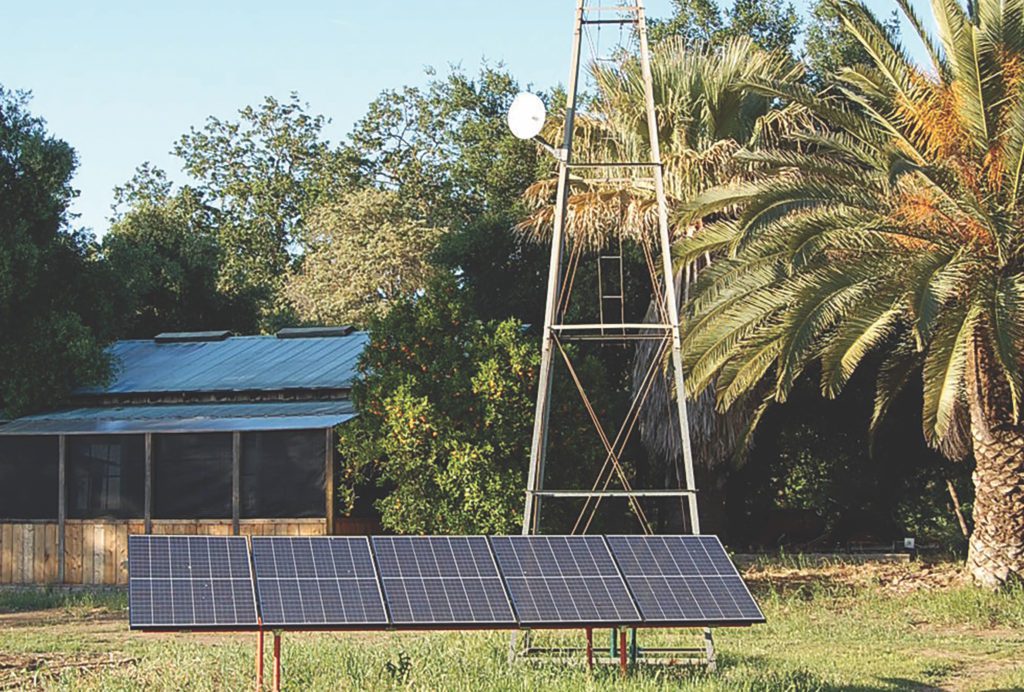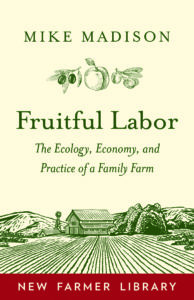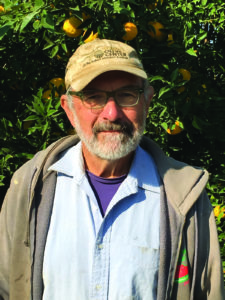

Jul 6, 2018Author describes the economy, ecology of small farm decision-making
Many are the challenges of the small farmer.
Smaller production numbers keep the economy of scale low, and farmland prices make expansion difficult. All operations, including decisions like equipment purchases, must be carefully planned.


“Each year, thousands of people, mostly you, mostly inappropriately educated, start small farms with hope and courage,” Madison writes in the first chapter. Most of the startups fail, although the growers have few regrets, he writes. His book offers some insights about what works.
Vegetable Growers News recently caught up with Madison for a Q&A about small farms and his book.
Vegetable Growers News: From your book it’s apparent you grow quite a variety of things. What fruits and vegetables do you grow?


Photo: Dianne Madison
Michael Madison: My principal crop is olives, but I also grow blackberries, apricots, figs, persimmons, plums and many kinds of citrus. One of the main problems I had to solve in setting up the farm is how to spread my labor out through the year instead of having it all bunched up at one time that would require a lot of hired help. Olives are a good fit in this regard: harvest starts in October and continues into January. I’m not a vegetable grower except for an acre of cantaloupes, which are usually included with vegetable crops.
VGN: Farming wasn’t your first career. How did you make the transition?
Madison: I was born on a farm and grew up doing farm work, but then I went off and did other things. At age 39, I decided to return to my roots and farm. For the first five years of farming I had a full-time day job. Then for six years I had a part time day job. It was only in year eleven that I gave up my off-farm income. It takes time to establish orchards and bring them into productivity, to assemble the equipment and supplies you need, to learn to manage your soils and to establish your markets. Unless you inherit a farm or are wealthy, it makes sense to grow into farming instead of jumping into it.
VGN: Can you make a good living from a 20-acre farm?
Madison: We do well enough. In our food system, most of the profit is made in processing and distribution, rather than in growing. Recognizing that, we set up our own licensed processing plant on the farm in order to capture some of that downstream profit. All of our olives we process for olive oil. Ninety percent of the fruit is made into jam or marmalade. Consider the example of apricots, a fragile, perishable crop. You can take a dollar’s worth of apricots and turn them into a seven-dollar jar of jam, and instead of having a 24-hour window to sell it, you have a year. Those two features – increased value and increased time for sales – are very compelling. For vegetable growers, pickles (okra, beets, snap beans, peppers, cauliflower) are a great option.
VGN: Machinery for farming can be very expensive. How did you fit that into your budget?
Madison: My olive mill I purchased new in Italy and shipped here. Everything else I buy used. There’s lots of good used equipment out there at very reasonable prices, and if you’re mechanically inclined you can find excellent bargains. Buying new equipment on credit can easily get you into trouble.
VGN: Some of the smaller growers really struggle with how to get help at their operations without actually adding employees – in other words, salaries or payroll. How do you deal with the need for hiring help during busy times?
Madison: California has a high minimum wage and very stringent regulations. Some farmers I know use a labor contractor to supply workers; this adds about 45 percent overhead cost to the wage, so that if you pay a worker $12 per hour it actually costs you $17. I just work by myself. If a crop is coming in too fast for me to manage, I call in a volunteer gleaner group and let them harvest it for the food bank. I’ve pulled out plantings where I realized that I had more of a crop than I could handle by myself.
VGN: What difficulties do you see for young farmers starting out in your region?
Madison: Farmland here is very expensive; for a large parcel, $30,000 per acre is common – for a smaller parcel of ten to twenty acres, the price is $40,000 per acre and up. Most beginning farmers can’t afford that. My advice is to get a long-term lease on excellent land close to your markets. Thirty-year leases are becoming common in this area. The lease should have an escape clause so the farmer can drop out without penalty if things don’t work out.
VGN: What words of encouragement would you give to small farmers out there who are starting another season?
Madison: Being a farmer is kind of like being a musician – it’s a very unstructured business, and not everyone is suited to it, but if you are, it can be a wonderful life. There are many right ways to farm; you just have to find one that works for you.
– Stephen Kloosterman, VGN Assistant Editor
Top photo: At Michael Madison’s farm, the windmill no longer pumps water. The tower supports a bat house and parabolic dish for internet connection. Photovoltaic panels in the foreground power a direct current pump in the well. Photo: Michael Madison














